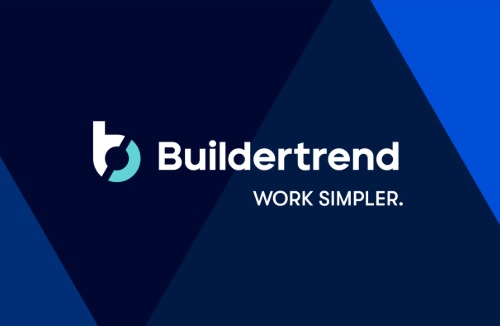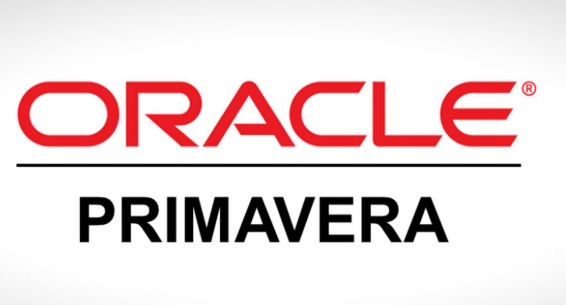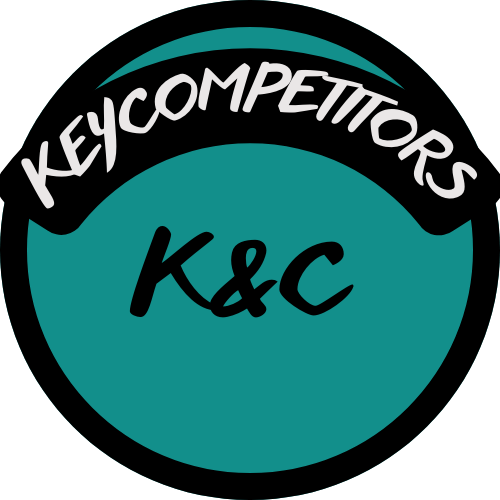Introduction
The construction industry is rapidly evolving, and technology is at the forefront of this transformation. Among the many solutions available, Procore Technologies, Inc. (PCOR) has emerged as a leader in construction management software. However, the competitive landscape is vast, with numerous Procore competitors offering unique features and solutions tailored to different segments of the construction industry.
Whether you’re a general contractor, a project manager, or a field team member, understanding the strengths and weaknesses of Procore competitors is essential for selecting the best software for your needs. This article provides an in-depth look at the competitive landscape, focusing on the key players, their features, and what sets them apart in the market.
Procore and The Digital Transformation of Construction
The construction industry is embracing digital transformation like never before. From project management and scheduling to field collaboration and financial tracking, technology is streamlining workflows and improving efficiency.
Procore has been a major driver of this change, offering a comprehensive platform that connects all stakeholders in the construction process. With features like project management, financial tools, and field productivity, Procore has set a high standard. However, the rise of Procore competitors has created a dynamic marketplace, with each platform targeting specific pain points and user needs.
This competition is a win-win for construction companies, as it drives innovation and provides a variety of options to meet the diverse demands of the industry.
Key Procore Competitors
Several platforms compete with Procore, each bringing unique strengths and features to the table. Here’s a detailed look at the most prominent Procore competitors:

Company Overview
| Feature | Procore | Autodesk Construction Cloud | Buildertrend | Fieldwire | Oracle Primavera | PlanGrid | Bluebeam |
| Founded | 2002 | (Various, Autodesk: 1982) | 2006 | 2013 | 1983 | 2011 | 2002 |
| Target Audience | General contractors, subcontractors, owners | Design, engineering, and construction teams | Home builders, remodelers, specialty contractors | Field teams, project managers | Project managers, engineers, schedulers | Field teams, project managers | Architects, engineers, contractors |
| Key Features | Project management, financial tools, quality & safety, field productivity | Design collaboration, project management, BIM tools | Project scheduling, client communication, financial tools | Task management, plan viewing, reporting | Project scheduling, resource management | Field collaboration, document management | PDF-based design collaboration |
| Focus | Collaboration, project management | Design-to-construction workflows | Residential construction | Field execution, mobile collaboration | Complex project scheduling | Field collaboration, document control | Design review and markup |
Market Share (Approximate)
- Procore: Holds a significant share of the construction management software market, particularly among general contractors and large-scale projects.
- Autodesk Construction Cloud: A major player leveraging Autodesk’s dominance in design software, making it a favorite for BIM (Building Information Modeling) workflows.
- Buildertrend: Strong presence in residential construction and smaller-scale projects.
- Fieldwire: Popular among field teams for its mobile-friendly features.
- Oracle Primavera: Dominates in complex project scheduling for large infrastructure and enterprise projects.
- PlanGrid: Known for its ease of use and document management capabilities, particularly for field teams.
- Bluebeam: A leader in design review and collaboration, especially for architects and engineers.
Product Range and Features of The Procore Competitors
Each Procore competitor offers a distinct set of features, catering to different aspects of the construction process.
- Procore: Comprehensive platform covering project management, financial tools, quality & safety, field productivity, design coordination, and preconstruction.
- Autodesk Construction Cloud: Includes Autodesk Docs, Autodesk Build, Autodesk BIM Collaborate, and Autodesk Takeoff, making it ideal for design-to-construction workflows.
- Buildertrend: Focuses on residential construction with features like project scheduling, client communication, financial tools, and a service portal.
- Fieldwire: Specializes in field execution with task management, punch lists, plan management, and collaboration tools.
- Oracle Primavera: Offers advanced scheduling and resource management tools, including Primavera P6 and Primavera Unifier.
- PlanGrid: Simplifies field collaboration with document management, plan viewing, and reporting.
- Bluebeam: Excels in design review and markup, offering powerful PDF-based tools for collaboration.
Strengths and Weaknesses of The Procore Competitors
Procore

- Strengths:
- Comprehensive platform with robust collaboration tools.
- Strong mobile capabilities for field teams.
- Large user base and extensive integrations.
- Weaknesses:
- Can be expensive, particularly for smaller companies.
- Implementation and onboarding can be complex.
Autodesk Construction Cloud

- Strengths:
- Seamless integration with Autodesk design tools.
- Strong BIM capabilities for design and construction workflows.
- Weaknesses:
- Some modules may lack the depth of specialized solutions.
Buildertrend

- Strengths:
- User-friendly interface.
- Specialized features for residential construction.
- Weaknesses:
- Limited scalability for large commercial projects.
Fieldwire

- Strengths:
- Excellent mobile app for field teams.
- Easy-to-use task management and collaboration tools.
- Weaknesses:
- Lacks financial and broader project management capabilities.
Oracle Primavera

- Strengths:
- Advanced scheduling and resource management.
- Ideal for large, complex projects.
- Weaknesses:
- Steep learning curve and high cost.
PlanGrid

- Strengths:
- Simplifies field collaboration and document management.
- Intuitive interface.
- Weaknesses:
- Limited project management features compared to Procore.
Bluebeam

- Strengths:
- Powerful tools for design review and markup.
- Widely used by architects and engineers.
- Weaknesses:
- Focused primarily on design and document collaboration.
Investments and Future Plans
- Procore: Investing in AI, data analytics, and machine learning to enhance project insights and decision-making.
- Autodesk Construction Cloud: Expanding its cloud-based offerings and improving BIM integration.
- Buildertrend: Enhancing its mobile experience and adding new communication tools.
- Fieldwire: Focusing on collaboration features and expanding analytics capabilities.
- Oracle Primavera: Modernizing its interface and improving cloud accessibility.
- PlanGrid: Adding advanced reporting and analytics tools.
- Bluebeam: Expanding its collaborative features and integrating with other construction platforms.
Head-to-Head Comparisons Between Procore Competitors
- Procore vs. Autodesk Construction Cloud: Procore excels in project management and collaboration, while Autodesk Construction Cloud is ideal for design-to-construction workflows.
- Procore vs. Buildertrend: Procore is better suited for large-scale projects, while Buildertrend focuses on residential construction.
- Procore vs. Fieldwire: Procore offers a more comprehensive platform, but Fieldwire is a simpler, field-focused solution.
- Procore vs. Oracle Primavera: Procore is user-friendly and versatile, while Primavera is unmatched in scheduling for complex projects.
- Procore vs. PlanGrid: PlanGrid is great for field collaboration, but Procore offers broader project management features.
Consumer Preferences
- Ease of Use: Fieldwire and Buildertrend are often praised for their intuitive interfaces.
- BIM Integration: Autodesk Construction Cloud is the go-to for BIM workflows.
- Scheduling Power: Oracle Primavera is the top choice for complex scheduling needs.
- Field Collaboration: Fieldwire and PlanGrid are favorites among field teams.
- Comprehensive Tools: Procore is preferred for its all-in-one platform.
Conclusion
The construction management software market is diverse and competitive, with Procore competitors offering a wide range of features and solutions. While Procore remains a dominant player, platforms like Autodesk Construction Cloud, Buildertrend, Fieldwire, Oracle Primavera, PlanGrid, and Bluebeam provide compelling alternatives tailored to specific needs.
Choosing the right platform depends on your project size, complexity, and priorities. Whether you need advanced scheduling, seamless BIM integration, or user-friendly field tools, there’s a solution out there for every construction team. By carefully evaluating your options, you can find the software that best supports your goals and builds the future of your construction projects.
FAQs About Procore Competitors
Here’s a friendly and detailed FAQ section to help you understand Procore competitors and their unique offerings. Whether you’re exploring construction management software for your business or simply curious about the alternatives, these questions and answers will guide you in making an informed decision.
What are Procore competitors?
Procore competitors are other construction management software platforms that offer similar tools and features to streamline workflows, improve collaboration, and enhance project efficiency. Popular competitors include Autodesk Construction Cloud, Buildertrend, Fieldwire, Oracle Primavera, PlanGrid, and Bluebeam, each catering to specific needs in the construction industry.
How does Autodesk Construction Cloud compare to Procore?
Autodesk Construction Cloud is ideal for teams that rely heavily on design and BIM (Building Information Modeling) workflows. It integrates seamlessly with Autodesk’s design software, making it a great choice for projects that span from design to construction. On the other hand, Procore focuses more on project management, collaboration, and financial tools, making it suitable for a broader range of construction projects.
Is Buildertrend a good alternative to Procore?
Absolutely! Buildertrend is a fantastic option for residential construction projects. It offers tools like project scheduling, client communication, and financial management that are tailored to home builders and remodelers. However, if you’re working on large-scale commercial projects, Procore might be a better fit due to its scalability and comprehensive features.
What makes Fieldwire stand out among Procore competitors?
Fieldwire shines when it comes to field execution. It’s designed for on-site teams, offering features like task management, plan viewing, punch lists, and reporting. Plus, its mobile-friendly interface makes it easy for field teams to stay connected. If your focus is on field collaboration rather than broader project management, Fieldwire is a great choice.
Why is Oracle Primavera considered a strong competitor to Procore?
Oracle Primavera is known for its advanced scheduling and resource management capabilities, making it ideal for complex infrastructure and enterprise-level projects. While it’s powerful, it can also be more complex and expensive than Procore. If your project requires detailed scheduling and portfolio management, Primavera is worth considering.
What is PlanGrid, and how does it compare to Procore?
PlanGrid is a user-friendly platform focused on field collaboration and document management. It’s perfect for teams that need tools to manage plans, track changes, and share updates on-site. While Procore offers a broader range of features, PlanGrid is an excellent choice for teams looking for a simple, effective solution for field communication.
Is Bluebeam a competitor to Procore?
Yes, Bluebeam is a competitor, but it specializes in design collaboration and document markup rather than full project management. It’s widely used by architects, engineers, and contractors for reviewing and annotating PDFs. If you’re looking for tools to streamline design reviews, Bluebeam is a strong contender.
What should I consider when choosing between Procore and its competitors?
When comparing Procore to its competitors, consider factors like:
- Project size and complexity: Larger projects may require Procore or Oracle Primavera, while smaller residential projects might benefit from Buildertrend.
- Ease of use: Platforms like Fieldwire and Buildertrend are praised for their user-friendly interfaces.
- Budget: Some platforms, like Procore and Oracle Primavera, can be expensive, so weigh your budget against the features you need.
- Specific features: If you need BIM integration, Autodesk Construction Cloud is a top choice; for field collaboration, Fieldwire or PlanGrid may be better.
Are Procore competitors suitable for small businesses?
Definitely! Many Procore competitors cater to small businesses. For example, Buildertrend is designed for home builders and remodelers, making it perfect for smaller-scale residential projects. Similarly, Fieldwire and PlanGrid offer affordable solutions with easy-to-use tools for field teams.
Which Procore competitor offers the best mobile experience?
Fieldwire stands out for its mobile-friendly interface, making it a favorite among field teams. Procore also offers strong mobile capabilities, but Fieldwire’s simplicity and focus on on-site collaboration make it particularly appealing for mobile users.
Can Procore competitors handle large infrastructure projects?
Yes, some Procore competitors are tailored for large infrastructure projects. Oracle Primavera is the top choice for complex scheduling and resource management, while Autodesk Construction Cloud excels in design-to-construction workflows for large-scale projects.
What is the future of construction management software?
The future of construction management software is bright, with platforms investing in AI, data analytics, and cloud-based solutions. Procore and its competitors are continuously enhancing their features to improve collaboration, automate workflows, and provide real-time insights. As technology evolves, these platforms will become even more integral to the construction industry.
Are there any free alternatives to Procore?
While most Procore competitors are paid platforms, some offer free versions or trials. For example, Fieldwire provides a free plan with limited features, making it a great starting point for small teams or businesses exploring construction management software.
Which Procore competitor is best for field teams?
Fieldwire and PlanGrid are both excellent choices for field teams. They offer tools like task management, plan viewing, and reporting, all designed to simplify on-site collaboration. If you’re looking for a solution that prioritizes field execution, these platforms are worth considering.
How do Procore competitors integrate with other software?
Most Procore competitors offer integrations with popular tools to enhance functionality. For example:
- Autodesk Construction Cloud integrates seamlessly with Autodesk design software like AutoCAD and Revit.
- Buildertrend connects with QuickBooks for financial management.
- Procore integrates with a wide range of tools, including Microsoft Project and Sage.
When choosing a platform, check its compatibility with the software you already use.
Final Thoughts
Choosing the right construction management software can feel overwhelming, but understanding the strengths and weaknesses of Procore competitors makes the decision easier. Whether you prioritize field collaboration, advanced scheduling, or design integration, there’s a platform tailored to your needs. Take the time to explore your options, and don’t hesitate to try free trials or demos to find the perfect fit for your team. With the right software, you’ll be well-equipped to build the future of construction!


